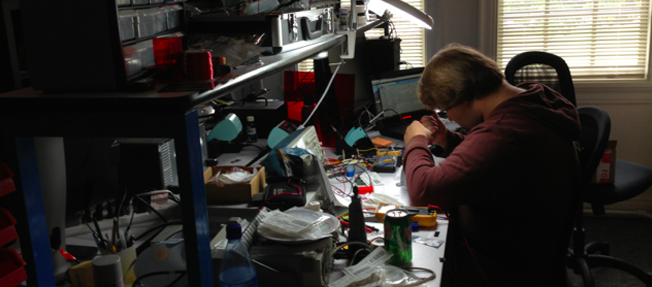
Hi, Indiegogo! I’m Greg Fisher, CEO and Founder of Berkeley Sourcing Group. As you prepare to manufacture, I’d love to share with you some best practices I’ve learned through BSG’s eight years working with hardware makers.
If you’re new to manufacturing, proper fulfillment for a crowdfunding campaign may sound like an overwhelming feat. The reality is that shipping on time is feasible if you start in the right direction, have a good plan, and account for the unknowns.
What gets most startups from the beginning in manufacturing is not understanding the complexity of the manufacturing process. This article will help identify the major unknowns, so that you can prepare for them.
1) Cash flow
A common mistake can be to launch a campaign without knowing the major costs. Some of the most easily forgotten ones are packaging, tooling, and shipping. Packaging can easily run to 10-20% of the cost of goods, tooling for injection molding can be anywhere between $2,000-$200,000, and shipping for a container of goods is generally between $2,000-$6,000. Make sure to get at least rough quotes for each of these items and have a good general sense of all of the other major costs so that you can plan accordingly.
2) Confirm that the Design is Manufacturable
Most of our clients come to us thinking their design is ready for manufacturing. They spent a lot of time making good prototypes and doing due diligence on how to produce the product. Out of 500+ products that we’ve quoted over the years, I think a total of zero have been able to go into manufacturing without any tweaks. There is a big jump between a good design—and even a good prototype—to the manufacturing process of mass production. Make sure you have consulted with experienced professionals to confirm that you can make the product the way you have designed it, or at least have a good understanding of what will need to be improved.
3) Identify Materials and Processes
Hand-in-hand with confirming manufacturability, understand what materials will be used in your final product, confirm they are available to your manufacturer (and at what cost), and understand which processes you will use for manufacturing. This may sound trivial if you have researched the design thoroughly, but not all materials are available in all parts of the world and sometimes, if they are, they may be much more expensive or take much longer to get. Likewise, the automated machines that are common locally may not exist where you need to make your product. Other processes can often be substituted, but if this substitution is not prepared for, it could add a significant delay.
4) Understand the Top Technical Hurdles
Each new product usually has at least one or two major hurdles that need to be addressed from the design phase to the manufacturing phase. These often come from putting different materials together in a unique way, working with unique sizes, requiring a certain function, or many other aspects that haven’t quite been done that way before in mass production. Manufacturing hates anything new. The reason our products look so flawless on the shelf is because they’ve been made that way millions of times and the kinks were worked out over all of those production runs. Doing something new will always create new challenges and needs to be addressed. Make sure to understand what is new and challenging about your product that must be answered before you can go into manufacturing and try to find the answer before you launch your campaign.
5) Budget for a “Myriad of Ten Thousand Things”
There will be ten thousand details to address between the end of a campaign and the shipment of the product to the customer. While most details will go smoothly with hard work, some will delay the timeline. There are holidays, bad weather, worker strikes, customs delays, and more. Make sure to account for this with a conservative timeline.
6) Have Clear and Constant Communication with Your Manufacturer
Remember those 10k things? It’s up to you and the manufacturer to work those out. Any miscommunication or unresponsiveness can quickly add up to delays. Do your part to communicate quickly and effectively and make sure to work with partners who do the same.
7) Don’t Forget About Shipping
Shipping from overseas generally takes about 5 weeks for the first shipment, door-to-door. Though the actual ocean shipping only takes about 18 days, US customs usually takes a closer look at first time shippers, and that often takes about a week. The container usually needs to arrive at the dock and be locked about five days before it ships, then there is some time in getting to and from both ports.
Hardware can be hard, but, as you know, it’s an incredible experience getting something you made out into the world. So set yourself up for success from the beginning by accounting for these seven potential hurdles. Your product and your company will be better for it.
Interested in learning more? Check out these hardware posts on Indiegogo’s blog.



You must be logged in to post a comment.